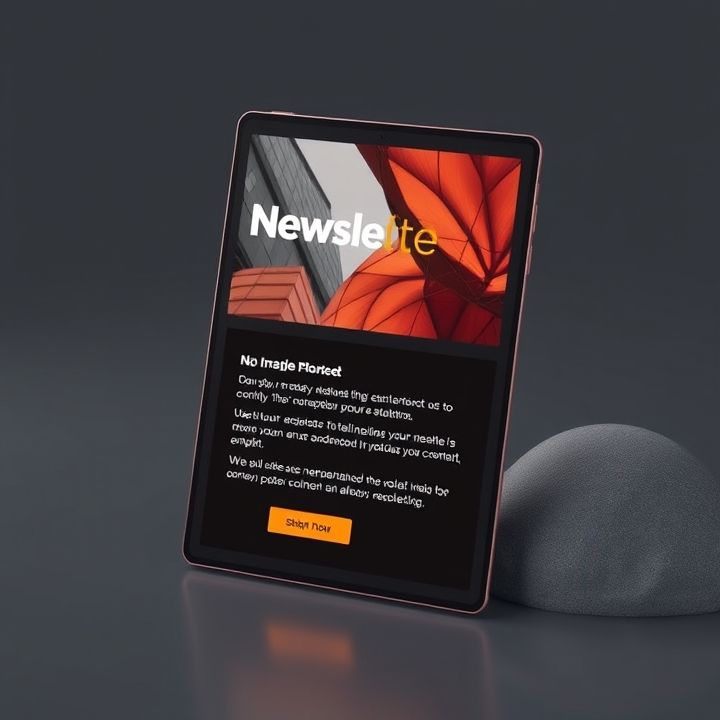Table of Contents
- Introduction
- Understanding customer segmentation and its importance
- Identifying different customer segments based on behavior, demographics, and preferences
- Analyzing customer engagement to determine optimal email frequency
- Crafting personalized content for each segment to increase engagement
- Implementing dynamic content in emails to cater to different segments
- Utilizing analytics tools to monitor email performance and adjust strategies
- Incorporating feedback to refine segmentation and email strategies
- Exploring successful case studies of companies effectively using segmentation to prevent email fatigue
- Conclusion
- Frequently Asked Questions
Introduction
Unlocking the secret to boosting engagement in email marketing is like finding a treasure map that leads directly to the heart of your audience. The biggest challenge marketers face is striking the perfect balance between staying top-of-mind and overwhelming recipients—otherwise known as email fatigue. The solution? Mastering email frequency through strategic customer segmentation.
Imagine being able to tailor your email campaigns so precisely that your audience couldn’t help but engage with your messages. By understanding the unique behavior and preferences of each customer segment, you can send the right number of emails at just the right time.
Let’s take a quick glance at why mastering email frequency matters:
| Benefit | Impact |
|---|---|
| Reduces unsubscribe rates | Customers remain engaged without feeling overwhelmed |
| Increases open rates | Ensures emails are anticipated and appreciated |
| Boosts conversion rates | Delivers messages when audiences are most receptive |
Ready to deep-dive into how customer segmentation can transform your email marketing strategy? Buckle up and get ready to say goodbye to email fatigue!
Understanding customer segmentation and its importance
Understanding customer segmentation is crucial for businesses aiming to optimize their marketing strategies and improve customer satisfaction. Customer segmentation involves dividing a customer base into distinct groups based on specific characteristics such as demographics, buying behavior, or interests. This process allows businesses to tailor their marketing efforts more effectively to meet the unique needs of each segment.
The importance of customer segmentation cannot be overstated. By understanding different customer segments, businesses can create personalized marketing campaigns that resonate more deeply with their audience. This enhances the customer experience as individuals receive more relevant offers and communication. Moreover, effective segmentation helps in resource allocation by focusing efforts on the most profitable or high-potential segments, ultimately driving better return on investment.
In the context of email marketing, customer segmentation enables companies to customize email frequency and content, preventing issues like email fatigue. By analyzing customer interactions and preferences, businesses can determine how often to send emails and what content each segment finds valuable. This strategic approach not only preserves customer interest but also fosters loyalty and engagement, leading to long-term success.
Identifying different customer segments based on behavior, demographics, and preferences
Customer segmentation is a crucial strategy in personalizing email marketing campaigns to prevent email fatigue. By categorizing customers based on various criteria, businesses can better address their individual needs and preferences. Behavior-based segmentation involves analyzing purchase history, website activity, and engagement with previous emails. This helps identify which customers are frequent buyers, browsers, or those who have abandoned carts. Demographic segmentation considers elements like age, gender, income, and location. Recognizing these factors aids in crafting messages that resonate with different demographic groups, ensuring relevance and potential higher engagement.
Preference-based segmentation focuses on understanding what customers want in terms of product or communication style. Collecting data via surveys or preference centers can provide insights into customer interests, preferred product categories, and desired frequency of communication. This allows brands to tailor email frequencies to match individual preferences, reducing the likelihood of fatigue.
Combining these segmentation strategies equips marketers with a robust framework for delivering targeted and effective email content. Leveraging this approach not only enhances customer satisfaction but also improves overall campaign performance by ensuring that emails are sent to the right people at the right time with the right content.
Analyzing customer engagement to determine optimal email frequency
Analyzing customer engagement is crucial for determining the optimal email frequency to ensure your subscribers stay interested without feeling overwhelmed. By closely monitoring engagement metrics such as open rates, click-through rates, and conversion rates, businesses can gain insights into how often their audience prefers to receive emails. These metrics serve as indicators of how engaging and relevant your emails are to the recipients.
One approach is segmenting customers based on their interactions with previous emails. For instance, highly engaged subscribers who regularly open and click through emails might appreciate receiving updates more frequently. Conversely, less engaged customers may benefit from receiving fewer emails, thus reducing the risk of email fatigue. It’s also beneficial to track unsubscribe rates and spam complaints, as these can signal when your email frequency may be too high.
Additionally, utilizing A/B testing for different email frequencies can be instrumental in fine-tuning your approach. By experimenting with varied sending schedules and analyzing the results, businesses can craft an emailing strategy that balances the need to maintain customer interest with preventing potential fatigue.
Crafting personalized content for each segment to increase engagement
Crafting personalized content for each customer segment is a powerful strategy to increase engagement and minimize email fatigue. It begins with understanding the unique characteristics and needs of each segment—whether they are loyal customers, potential leads, or occasional buyers. By utilizing customer data, businesses can tailor their email content to the preferences and behaviors of different segments.
For instance, loyal customers who frequently engage with the brand may appreciate exclusive offers or early access to new products, whereas new subscribers might benefit from informative content that builds trust and introduces the brand’s value propositions. Personalizing the subject line, timing, and even the design of the email can make a significant difference in how content is received and acted upon. By leveraging data analytics and feedback, marketers can continuously refine their strategies to ensure that each email lands at the right time with the right message.
This targeted approach not only enhances user experience but also fosters a stronger connection between the brand and its audience. When customers feel understood and valued, they are more likely to remain engaged, reducing the likelihood of opting out or overlooking future communications.
Implementing dynamic content in emails to cater to different segments
Implementing dynamic content in emails is a powerful strategy to cater to different customer segments, optimizing engagement and minimizing email fatigue. This approach allows marketers to personalize email content based on specific characteristics such as purchase history, browsing behavior, or demographic information. By leveraging data analytics, businesses can identify various customer segments and customize content to align with each segment’s interests and preferences. This ensures that recipients receive relevant information, increasing the likelihood of engagement.
For instance, a retail company might use dynamic content to showcase different products to customers based on their previous purchases. A frequent buyer of electronics could receive emails highlighting the latest gadgets, while a fashion enthusiast might see the newest clothing trends. Additionally, segment-specific incentives, like exclusive discounts, can be integrated into emails to further personalize the customer experience.
Such targeted communication not only enhances the customer journey but also aids in building stronger brand loyalty. By continuously updating the criteria and content used for segmentation, businesses can maintain relevance in their communications, reducing the risk of emails becoming monotonous or irrelevant. Ultimately, dynamic content ensures each segment receives tailored messages, fostering a strong connection between the brand and its clientele.
Utilizing analytics tools to monitor email performance and adjust strategies
Utilizing analytics tools to monitor email performance is crucial for tailoring your email frequency and preventing fatigue among recipients. These tools provide insights into key metrics such as open rates, click-through rates, and conversion rates, allowing you to gauge the effectiveness of your campaigns. By analyzing this data, businesses can identify patterns in engagement and adjust strategies accordingly. For instance, if open rates decline for a particular segment, it may indicate the need for a reduced email frequency or more targeted content.
Moreover, analytics can help determine the optimal time to send emails, enhancing the likelihood of them being read. Segmenting your audience based on behavior and preferences using these insights ensures that customers receive relevant content, reducing the risk of them becoming overwhelmed by excessive communication. This individualized approach not only fosters stronger relationships but also enhances overall campaign performance.
Furthermore, A/B testing can be employed to test different strategies and determine what resonates best with each segment. By continuously monitoring and adjusting based on analytics, businesses can maintain a dynamic and responsive email strategy that keeps engagement high and prevents email fatigue.
Incorporating feedback to refine segmentation and email strategies
Incorporating feedback is a crucial step in refining your customer segmentation and email strategies to enhance their effectiveness. By actively listening to your audience through surveys, feedback forms, and direct responses, you can gain invaluable insights into their preferences and pain points. This information allows you to adjust your segmentation criteria, ensuring that each group receives content that resonates with their interests and needs.
Feedback also offers a window into how your email frequency is being perceived. Some segments may prefer more frequent updates, while others might appreciate less frequent communication. By analyzing the feedback, you can strike a balance between keeping your audience engaged and avoiding email fatigue.
Furthermore, integrating feedback into your strategy encourages a dynamic approach where customer needs drive your decisions. This not only enhances customer satisfaction but also improves the overall effectiveness of your email campaigns. Regularly reviewing and updating your segmentation and personalization based on real-world feedback can give your brand a competitive edge by ensuring that your communication remains relevant and welcomed by your audience.
Exploring successful case studies of companies effectively using segmentation to prevent email fatigue
In the fast-paced world of digital marketing, companies constantly strive to enhance user engagement while preventing email fatigue. Successful case studies shed light on businesses that have effectively utilized customer segmentation. One notable example is Spotify, a streaming giant that uses advanced segmentation to tailor its email communication. By analyzing user data such as listening habits, Spotify sends personalized playlists and recommendations, ensuring content is relevant and minimal in frequency, thus preventing fatigue while enhancing user satisfaction.
Another exemplary case is Amazon, which leverages purchase history and browsing behavior to segment its customer base. This allows Amazon to send highly targeted emails with product suggestions and exclusive deals, aligned with each customer’s interest and shopping needs. This strategic approach reduces unnecessary emails, maintains customer interest, and drives higher engagement rates.
Retailers like Sephora also excel in using segmentation effectively. By categorizing customers based on purchasing behavior and engagement level, Sephora sends tailored content that resonates with each segment. For high-value customers, this might mean exclusive previews, while for others, it could be updates on loyalty points or curated beauty tips, thus keeping the communication beneficial and relevant.
Conclusion
As we conclude this journey into mastering email frequency through customer segmentation, it’s clear that personalization is key to maintaining engagement and mitigating email fatigue. By understanding and segmenting your audience based on behavior, demographics, and preferences, you create pathways for tailored communication that resonates on a personal level. Aligning your email frequency with the needs of each customer segment, backed by analytical insights, ensures that your content remains relevant and welcomed, rather than overwhelming. Dynamic content further enhances this personalization by adapting to the unique interests of different segments.
Moreover, considering feedback and leveraging successful strategies from market leaders like Spotify, Amazon, and Sephora offer valuable lessons in achieving balance and efficacy in email marketing. Employing analytics tools keeps you informed of your campaign’s performance, allowing for continuous adjustment and refinement. This holistic and adaptive approach not only prevents email fatigue but also fosters loyalty and a deeper connection with your audience. Ultimately, by valuing personalized experiences, businesses can unlock the secret to elevated engagement and long-term success in their email marketing efforts.

